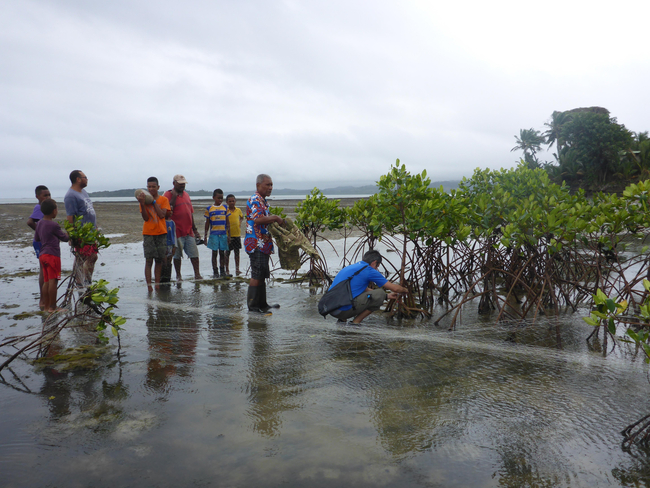15.09.17 | In September, the Leibniz Centre for Tropical Marine Research (ZMT) hosted an international science symposium on the protection and sustainable use of mangroves, the population of which is in dramatic decline. Approximately 100 of the leading mangrove researchers from all over the world attended the conference and workshop of the mangrove section of the International Union for Conservation of Nature (IUCN). The renowned symposium has been taking place annually since 2013 at different locations and – upon the initiative of the ZMT – will be held for the first time in Germany in the Hanseatic City of Bremen.
Mangrove forests thrive in areas that usually seem inhospitable to people. The 70 to 80 different species grow in the tidal zone or along estuaries and can live in saltwater and oxygen-poor sediments − conditions that are toxic to most plants. Mangroves cover an area of around 15 million hectares worldwide. However, up to two percent of these highly productive coastal ecosystems fall victim each year to clearing and deforestation to create space for hotel facilities, palm oil plantations or aquaculture ponds.
Scientists are therefore facing the issue of how to protect and sustain the mangroves, as these tropical coastal forests play an important role for humans and animals. "Mangroves store huge amounts of carbon and nitrogen in their sediments and contribute significantly to global climate protection," said Professor Martin Zimmer, head of the Mangrove Ecology Work Group at the ZMT and organizer of the conference. “In addition, they protect coasts from erosion by storm waves. Since one third of the world's population live on coasts, this protective function is also of enormous importance.”
At the symposium of the mangrove section of the International Union for Conservation of Nature (IUCN), international researchers from various disciplines met for professional exchange. The conference program was broadly diversified: in 35 lectures and 30 posters, questions regarding the major topics of restoration and protection measures for mangroves have been discussed. Many of the speakers are working in reforestation projects or protected areas in Bangladesh, Gambia, Indonesia, Colombia, Jamaica, Malaysia, the Philippines, Tanzania or the U.S.
“It was not until a few decades ago that researchers began focusing on mangroves, as their role as carbon sink became increasingly known,” said Professor Zimmer. "These valuable ecosystems serve as nursery for many fish and other marine animals, which are not only a food source for the local population, but also for us in Germany. Only when we understand the mangrove ecosystem can we protect it adequately. Every year the IUCN Symposium makes an important contribution to the mangrove knowledge base.”
IUCN Symposium Programme
IUCN Mangrove Symposium Abstracts Booklet





